Flat nipples aren’t what you’d expect would be that big of a problem when mothers have to breastfeed their kids, but shockingly enough, they very much are.
Flat nipples make latching it a lot harder on the baby, as the latch is flimsy and easy to detach from.
This, in turn, prevents the baby from getting enough milk out of a feed. It can also result in him swallowing more air than he otherwise would with a normal feed, which is likely to make him very fussy.
But, not every woman suffers from flat nipples and it is by no means a permanent and unsolvable condition. There are plenty of ways around it.
That said, a mother’s nipples come in all shapes and sizes.
Different than the standard nipple shape where it pulls away from the breast, inverted nipples, as the name implies, invert back into the breast, leaving only the areola exposed.
But how does it all come about? Well, why don’t we get straight on into it and see how to deal with flat nipples – and if yours are even flat to begin with.
What Determines If You Have Flat Nipples Or Not?

On the subject of what causes flat nipples, it’s pretty straightforward.
These are mostly physical changes and have little to do with your psyche, but each of them are very relevant in deciding how your nipple decides to form.
It’s generally determined by the length of the milk ducts that hide behind the nipple, the amount of fat in your breast tissue, and the density of the connective tissue itself.
Do note that if you have flat or inverted nipples, you might not be retaining that shape forever, as it’s known to alter during the first few weeks of pregnancy.
They act like buds itching to blossom so the baby can get the sweet, delicious nectar when he’s finally born.
But, if even then you get stuck with half-protruding nipples, there is still hope despite having to deal with a bit of a challenging time breastfeeding for a while. But I’ll cover a few methods in a moment.
What Else Can Cause Flat Nipples?

Now, regardless of your nipple shape, you will still probably have to deal with your nipples being flat at one point or another during your child’s breastfeeding period and that’s all due to one thing: breast engorgement.
Breast engorgement is exactly what it sounds like.
Your breasts become tender and full of milk, likely a product of having your baby won’t latch onto your breast for a certain period of time, or from pregnancy-related hormonal changes within the body.
It could also be as a result of a naturally overly active breast milk production, which causes an excess of milk supply – and that ends up causing a whole range of other complications.
You start getting sore nipples and, if left untreated, are likely to get mastitis or suffer from blocked milk ducts as well if you don’t properly drain your breasts.
10 Ways To Breastfeed With Flat Nipples
1. Figure out whether or not your nipples are actually flat or just inverted
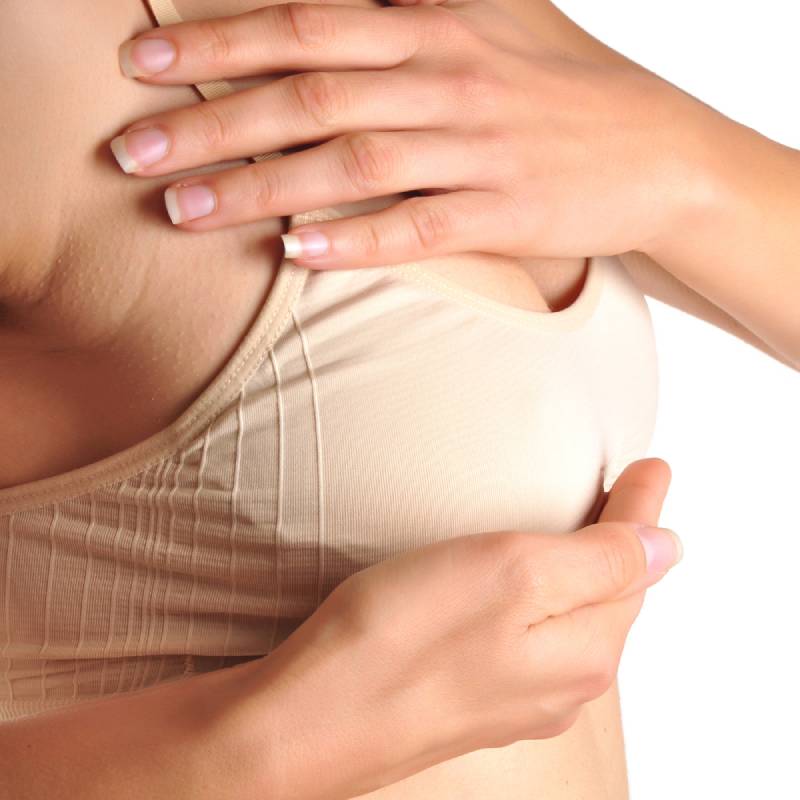
Some people do genuinely get confused when it comes to what shape their nipples take, but it’s understandable since it’s rare to ever have that come into question or be taught anywhere.
The best way to check is to do what is called a pinch test.
Simply place two fingers around the nipple area, on the areola and then give it a little squeeze, repeating on the other nipple, of course.
Should your nipples retract back inside or flatten, then you have one of those two cases.
If not, then you’re someone who is blessed with regular nipples and will give your baby an easier time with getting breast milk. No need to worry about taking any further steps then, mama!
2. Hand express your nipples outward
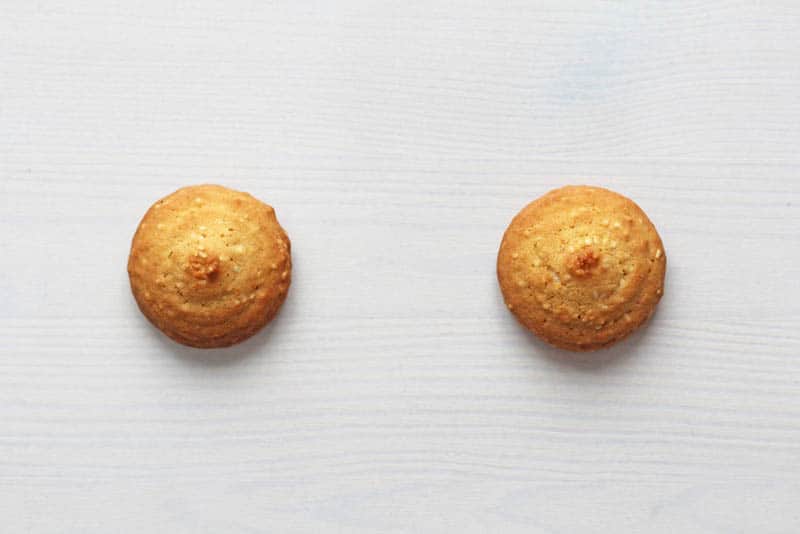
This one works best if the cause of your flat nipples is due to breast engorgement or a general oversupply of milk.
A well known technique in the breastfeeding world that every mama should know is to simply cup an engorged breast with one hand while wrapping the thumb and the index finger around the base of the nipple, on the areola.
After that, you squeeze the two fingers gently together before relieving the pressure. This way you simulate a soft, sucking motion.
Keep repeating this and keep your fingers steady while using the other hand to give the breast very light squeezes to help express a little bit of milk and get the nipple to protrude again.
Don’t go too hard though, as you’ll only need to hand express enough milk to get the breast softer for your baby’s mouth to get a good latch and to help relieve a bit of that soreness that comes with breast engorgement.
If you go too hard, you’re only going to make the problem worse for yourself, thus it’s best to do it right before a breastfeeding session with your little one.
3. Pull breast tissue back

This might seem like a simple method, but it’s one that works.
Even if it doesn’t show the most results like some of the other techniques, it’s one that can be done rather quickly.
All you need to do is to get a hold of the breast tissue that’s right behind the areola and pull back a bit. If it works you should see your flattened nipples protrude or nipple inversion reverse to an extent.
4. Nipple stimulation
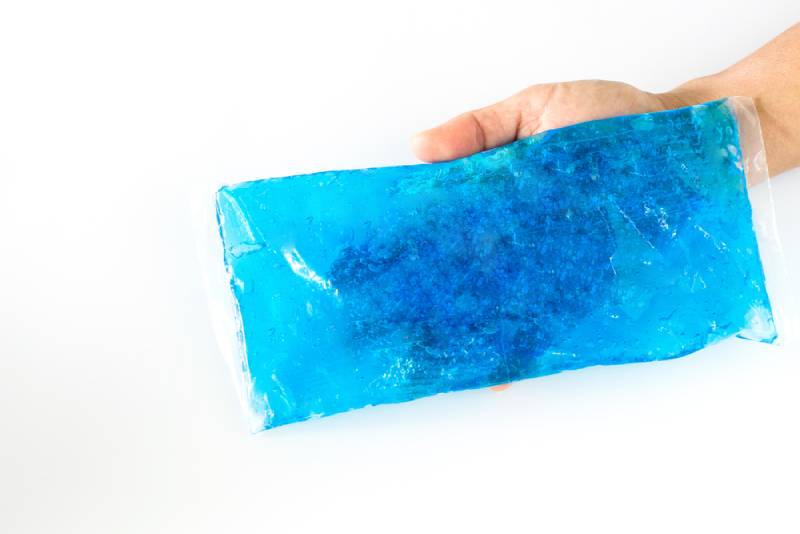
Much like the act of pulling the breast tissue back, this is a very simple trick, but one that works and can come in handy should the former not work for you.
The best way to perform nipple stimulation is to simply place your nipple between two fingers (usually the thumb and whichever other one is most comfortable for you) and roll it around gently between your fingertips.
The other method is to simply use something cold like a damp cloth or even some ice to help get the nipple to protrude outward.
You can also rely on reverse pressure softening, also known as RPS – a technique that helps move some of the swelling to the back of the breast while softening the breast tissue around the areola, allowing for easier access to the nipple and a better latch.
And there is yet another method called the “Hoffman technique” that, in a very recent study conducted in 2017, has shown that it helped improve the nipple shape of many women and the quality of their breastfeeding sessions.
This method is performed by using your thumb and your index finger and, once again, placing it on either side of the nipple.
After that, it’s just a simple exercise of pressing into the breast tissue and then lightly stretching the areola to each side at least five times a day.
It’s a very simple method that, if practiced daily, will help you achieve results.
5. Positioning

Another easy trick to assist your child in attaining a deep latch on your breast and improve his suckling is to hold your breast steady in either a V-hold or a C-hold.
A C-hold is similar to what you do for hand expression of milk, except this time it’s done during a feed.
You take your index and thumb and form them into the shape of the letter C and place them around the areola, while your other fingers cup the bottom of the breast and then give your breast gentle squeezes.
This not only stimulates the nipple to stay protruded outward, but it also stimulates milk flow if you’re struggling with it.
That said, be careful with how hard you squeeze, as too much milk will overwhelm your little one and may result in him gagging or choking.
A V-hold is slightly different in the fact that your fingers act like a pair of dull scissors that you form with your middle and index finger.
Then, slide your nipple between the two fingers and place your other fingers underneath the breast before pressing down on it to help express milk a bit better and to help pop the nipple out.
6. Breast pumps or similar suction devices

Now if you’re someone who isn’t the biggest fan of having to do everything by hand, there are some helpful tools that can assist in coaxing your inverted or flat nipple out of hiding.
One such tool is one that you likely already have home, a manual or electric breast pump.
One that’s very useful in your day to day life as a mom while your child still requires breastfeeding, though they can get a bit pricey so they may not be for everyone at the moment.
That said, you can get one off your insurance company if you file the right paperwork, so be sure to look into it.
While you might not be able to get the specific one that you wanted, rest assured that the insurance companies still cover some of the most popular breast pump brands.
That said, breast pumps usually work best on inverted nipples and you may only see a slight improvement for flat nipples, but any positive effect is good.
Though, before you decide on which one you want to get, I advise asking a certified lactation consultant or breastfeeding specialist so they can help determine which of the choices are best for your nipple shape.
The same goes for any other nipple suction devices whose specific purpose is to help draw the flattened and inverted nipples out of “hiding.”
They usually come under various different names, but all of them mean nipple extractor in some way, shape, or form.
The way they work is that they’re usually worn under clothing, hidden from plain sight, and help by stimulating the nipple as you go about your day and pulling it into a small compartment, keeping it there until it’s time to breastfeed.
With enough use, the nipple extractor can help make the breast tissue around the nipple a lot less tough and more pliable, meaning it’ll be a lot easier to get the nipple out next time.
7. Breast shells and nipple shields
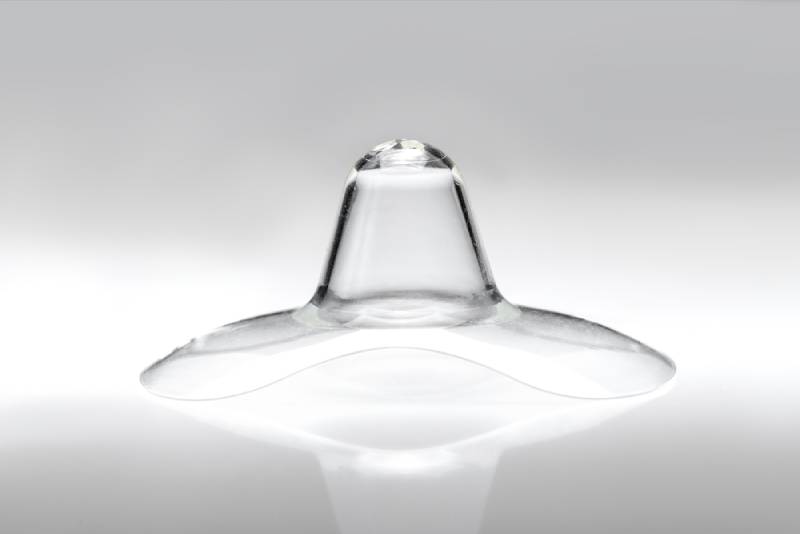
Breast shells, also known as milk collection shells, are a small bit of plastic that goes over your nipples and areolas.
They serve as protection against chafing for mothers with overly sensitive or sore nipples, and for those who may have a leaking issue when lactation is concerned.
It helps keep your clothes clean during your everyday life and the nipples drawn out while collecting the milk droplets.
Nipple shields, on the other hand, are what moms commonly use when having to deal with nipple confusion, which is when the baby has issues weaning away from the bottle and doesn’t want to feed directly from the breast again.
A nipple shield helps simulate that feeling of a bottle while getting the baby used to a mother’s breast again.
They’re usually made out of soft silicone so as to not injure the nipple and be a material familiar to the child.
It helps act as a nipple extension for flat nipples, but use of a nipple shield should remain somewhat limited, given how it may have an adverse effect and may have the baby prefer it over the breast once again.
Stick to temporary use only and don’t make it into a crutch that you have to rely on when breastfeeding your little one.
Excessive use and improper positioning can also lead to some nipple injury as well.
Make sure to ask your lactation consultant (IBCLC) before proceeding with one of these products to make sure they’re safe for your body and that you understand the risks.
8. Check stools to see if the methods worked
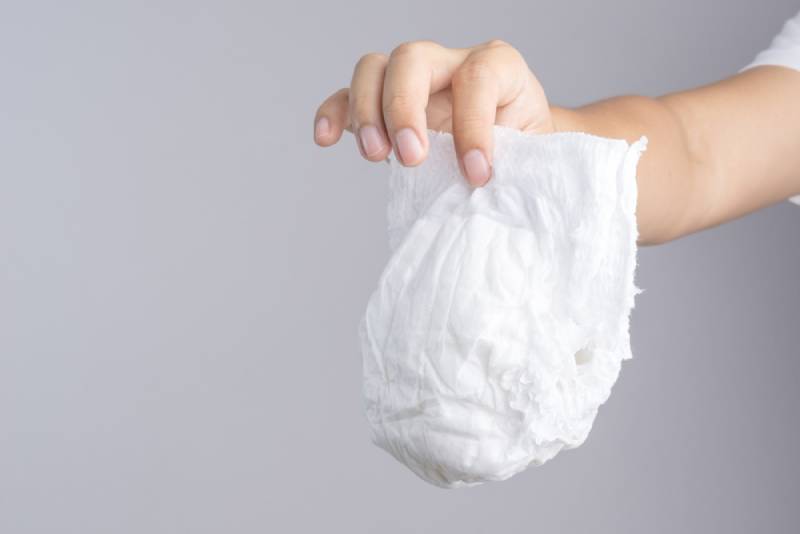
The best way to check if any of these methods worked in improving the quality of your breastfeeding is to check your little one’s stools.
If it’s not frothy and green, and is wet and very messy, then you’re doing okay.
If you notice any aforementioned frothing though, make sure to call a pediatrician or any other qualified healthcare provider, since that’s a very extreme case.
9. Surgery

The last-resort method, if none of these more natural methods end up working, is to undergo a surgical procedure.
There are two different ones, though only one of them helps preserve your milk ducts so you can continue breastfeeding, which is the whole point of your nipples protruding in the first place.
That said, you should take a step back and think about this and if you really want it because there’s no going back once you’ve gone through with it.
It’d also be wise to consult your lactation consultant or family doctor on the matter to get an expert opinion.
10. Get an expert’s opinion

The best piece of advice when it comes to any matter concerning your body and its many intricacies is to go to a professional.
In this case, that’s your IBCLC, your doctor, and any other certified healthcare provider.
Don’t make any of these decisions of your own accord as there might be a simpler solution to it all.
Let the experts diagnose it first and exhaust all options before resorting to some more drastic ones.
In Conclusion
Having to deal with breastfeeding while having flat nipples can be tough, and, for your baby, latching with flat nipples is even harder, but luckily there are many ways to do so.
The best thing to do is to test the field out a bit the first time around to see if your flat or inverted nipples are a permanent condition or if it’s something that’s easily remedied through a bit of stimulation.
If not, then feel free to resort to any of the above mentioned methods, but do make sure to consult a professional in the field first before attempting any so you can at least be shown the proper method through practice rather than words alone.
I hope that you manage to resolve your issue and that your breastfeeding remains as calming of an experience as ever, mammas.
References:
Mathi, P. P., Mounika, N., Lakshmi, B. V. & Siva Kumar V. P. R. (2017). “Effect of Hoffman’s technique on flat nipple over nipple type and quality of breast feeding among post-natal mothers.” International Journal of Pharma and Bio Sciences, 8(4), 522-525. Retrieved from https://ijpbs.net/abstract.php?article=NjI3MA==
Like this post? Please share or pin it for later. You can also stay in the loop and follow us on Facebook, Instagram and Pinterest.
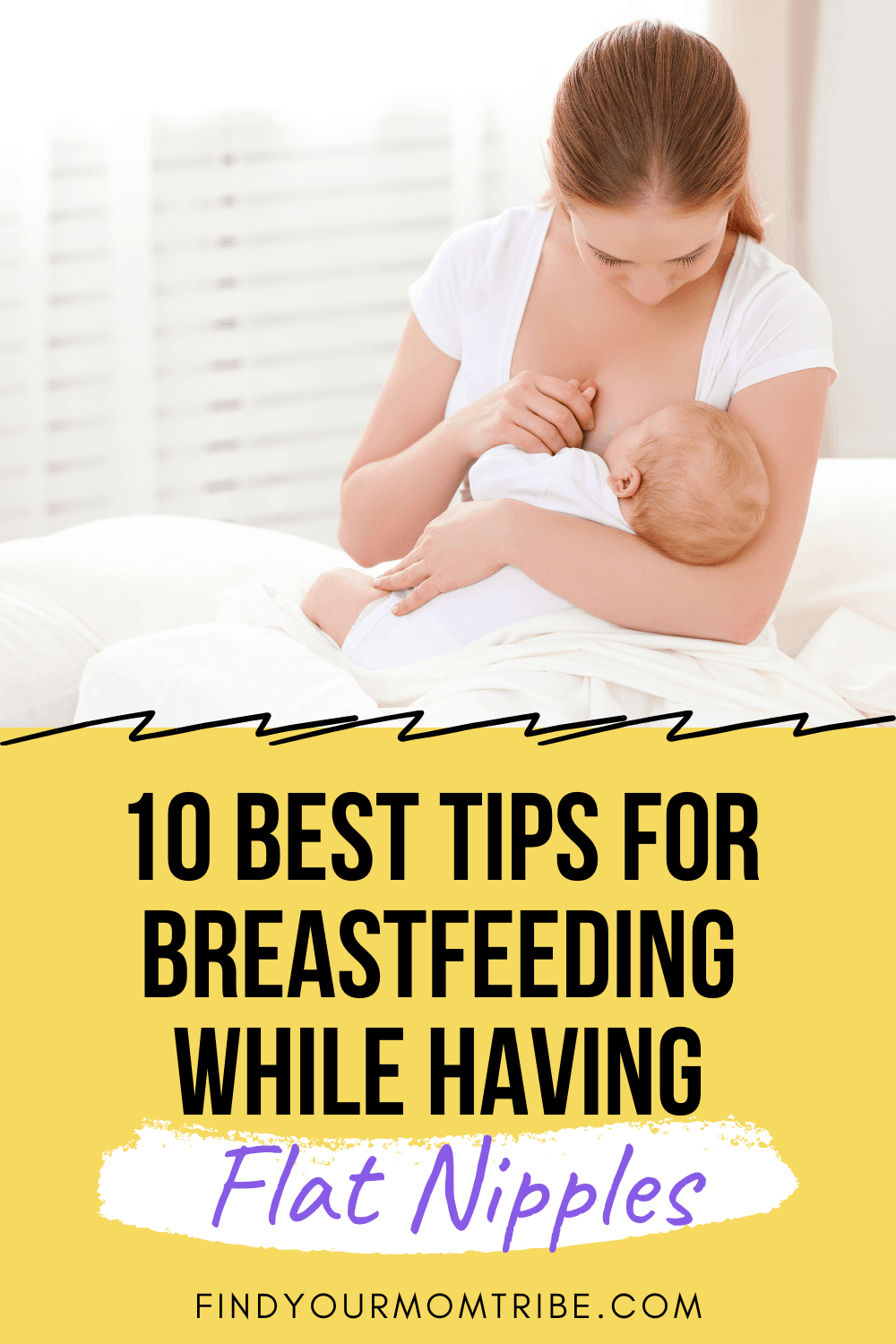
This post contains affiliate links. Please see our full disclosure or more info.

